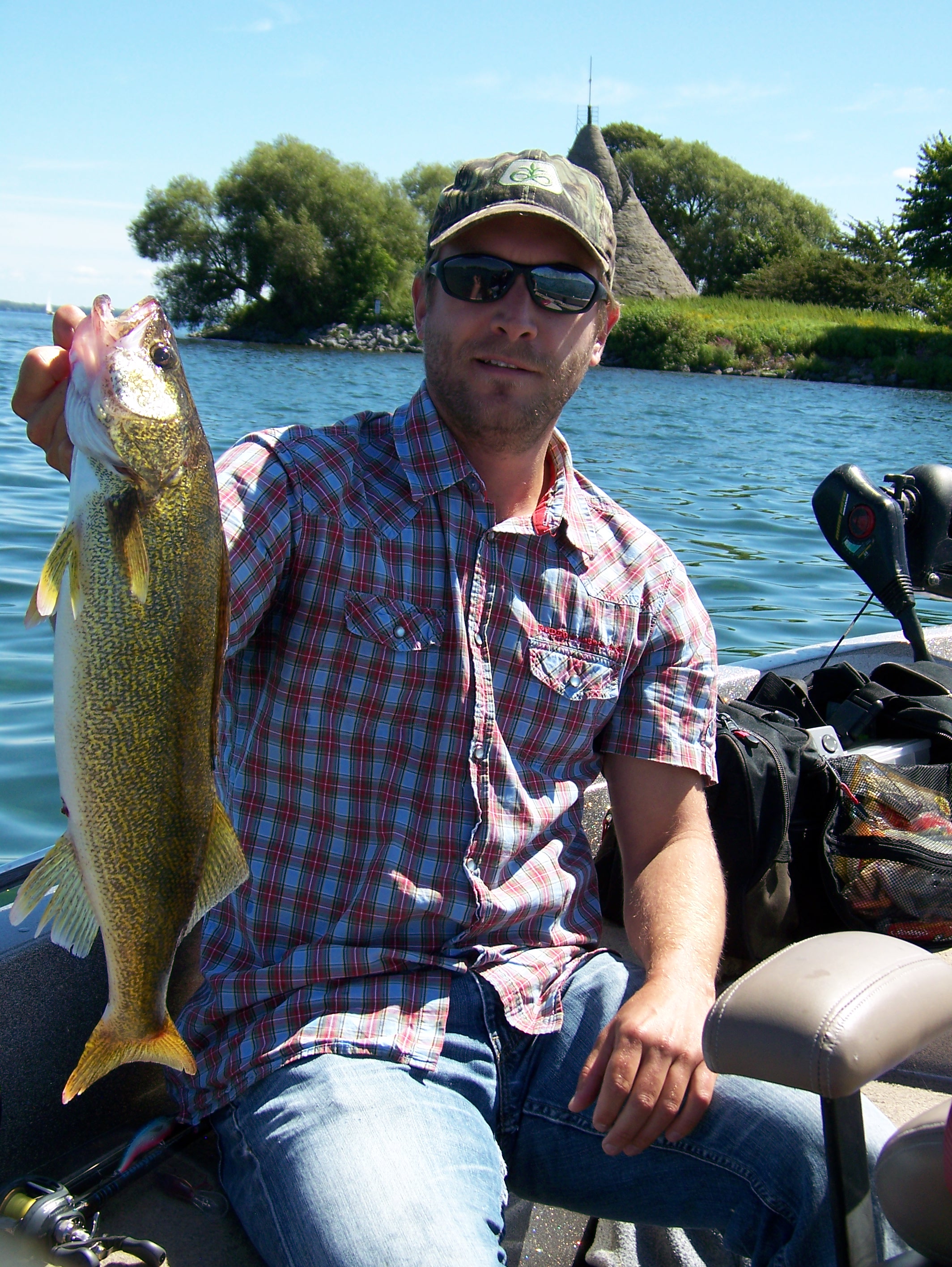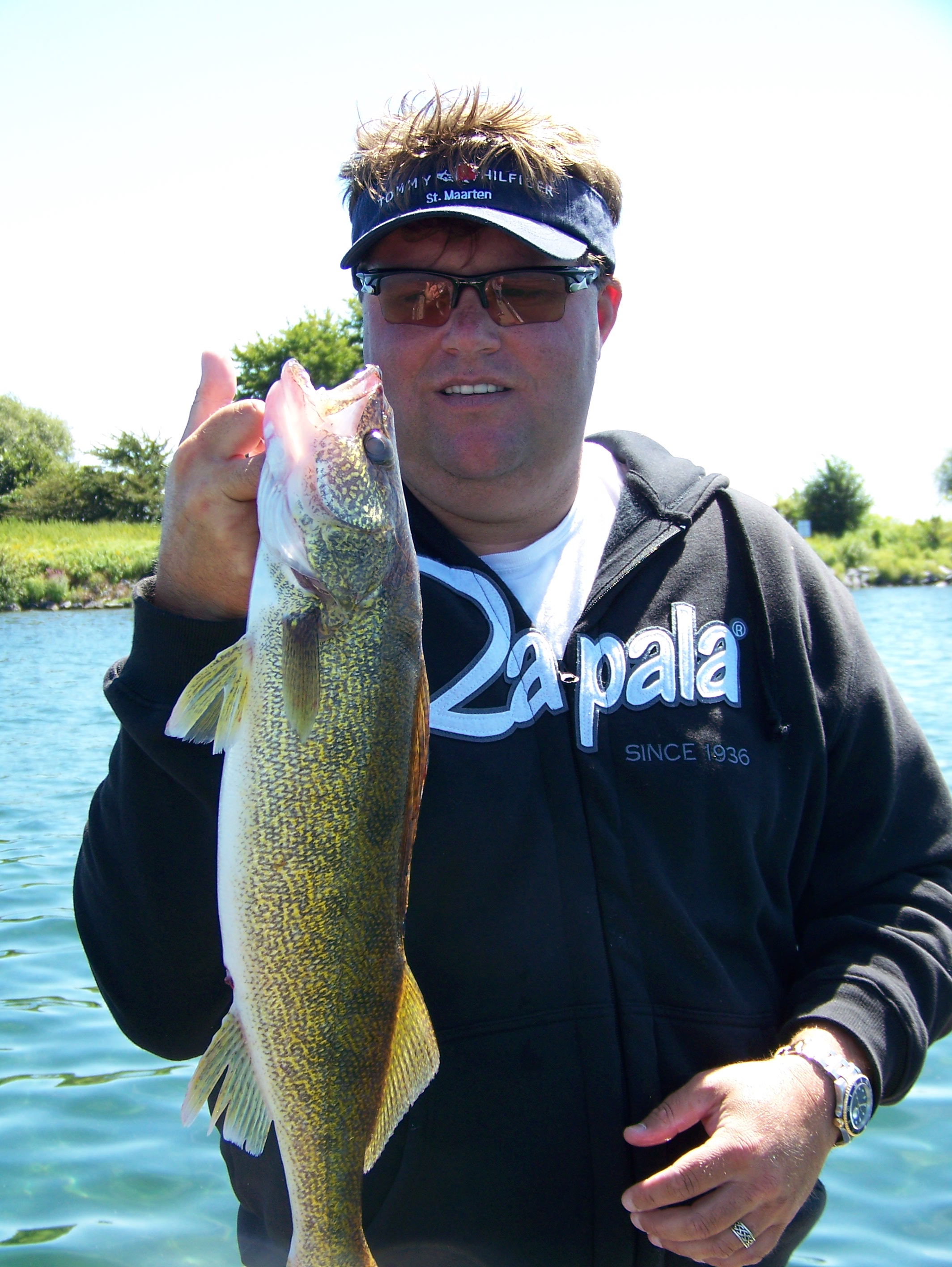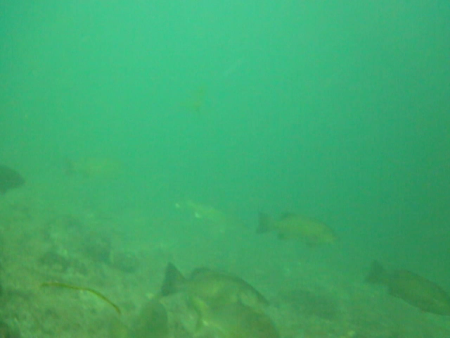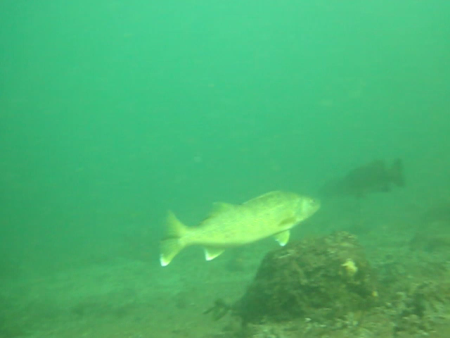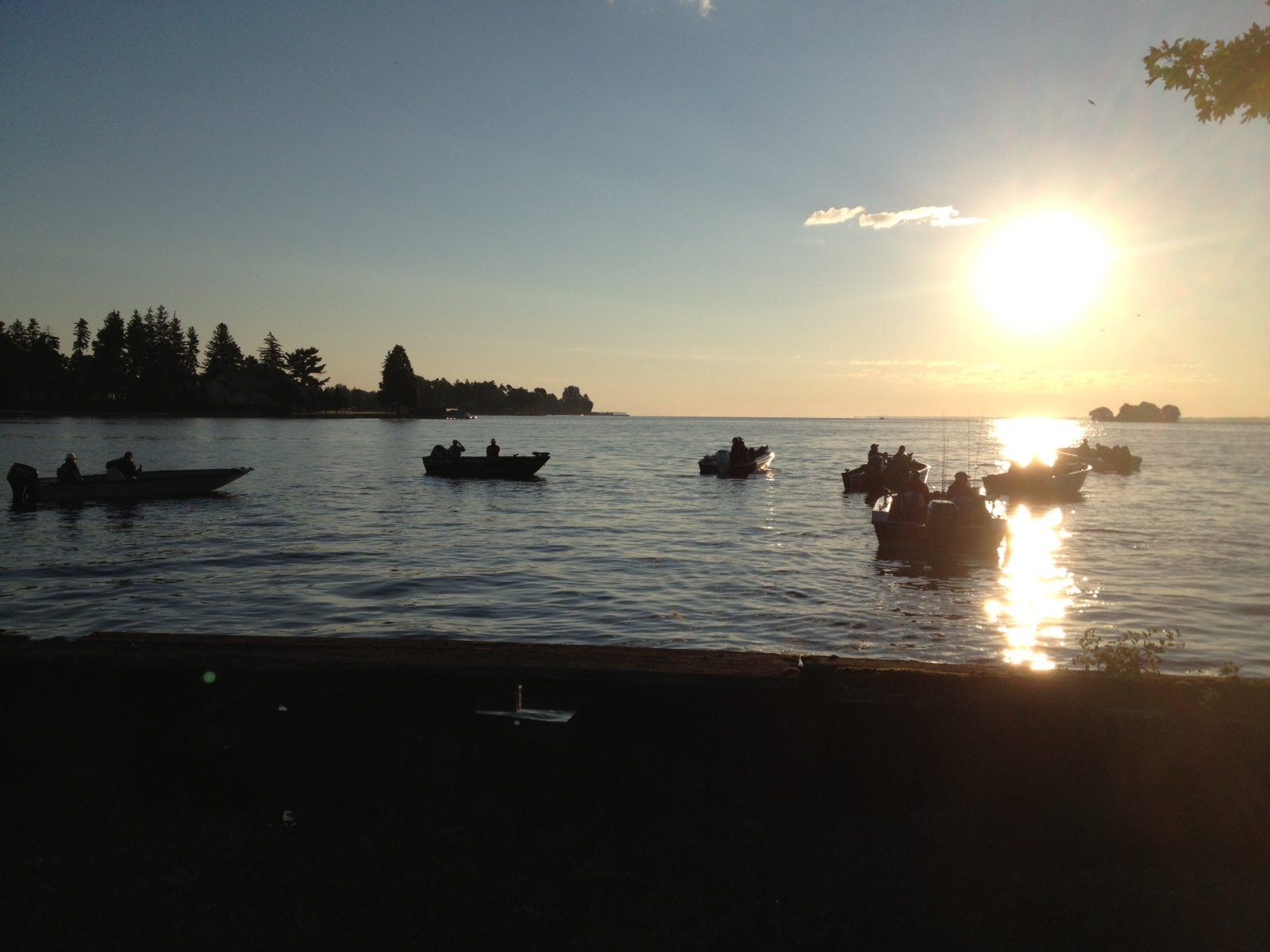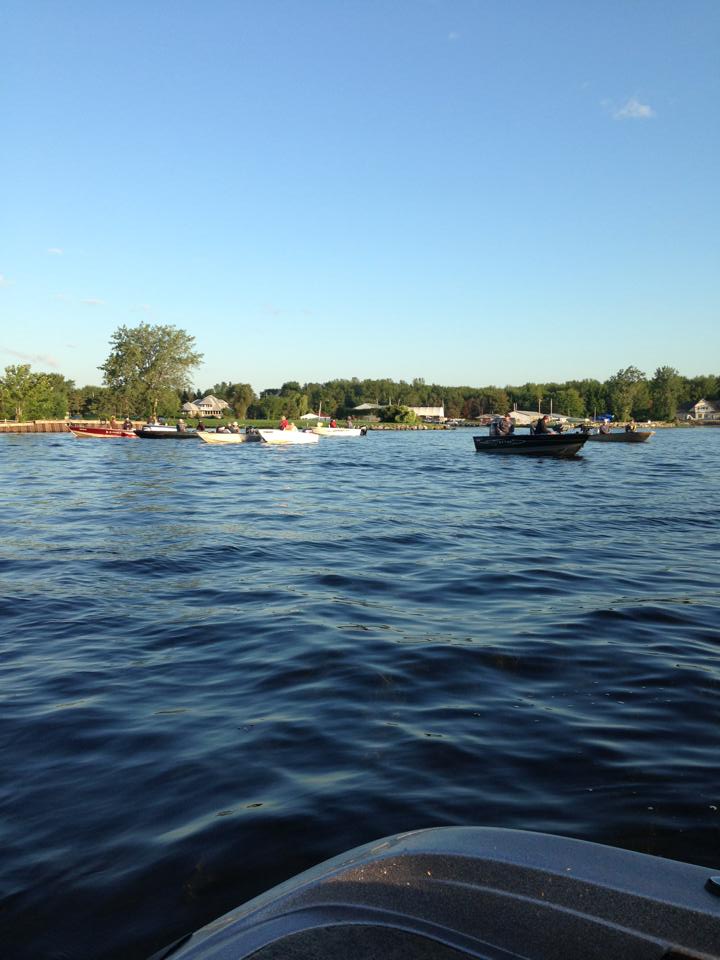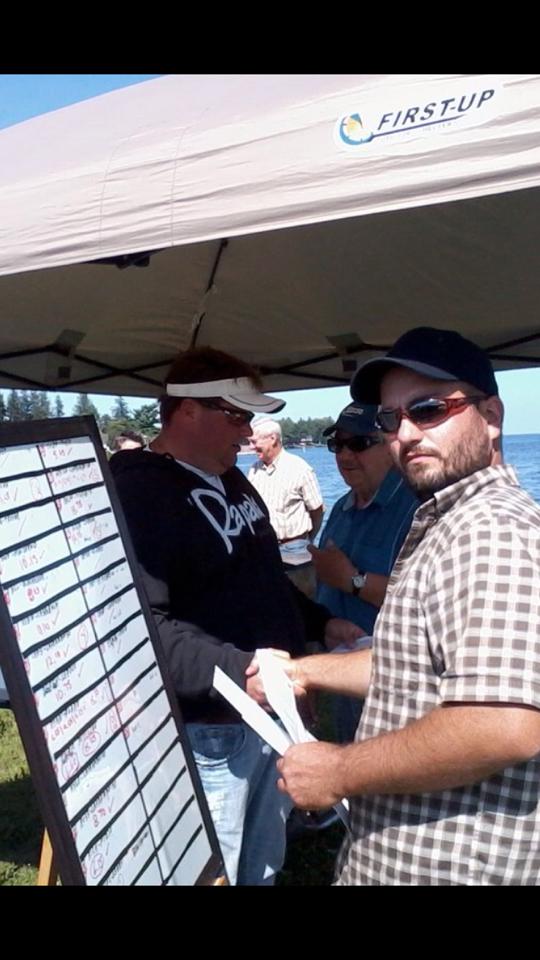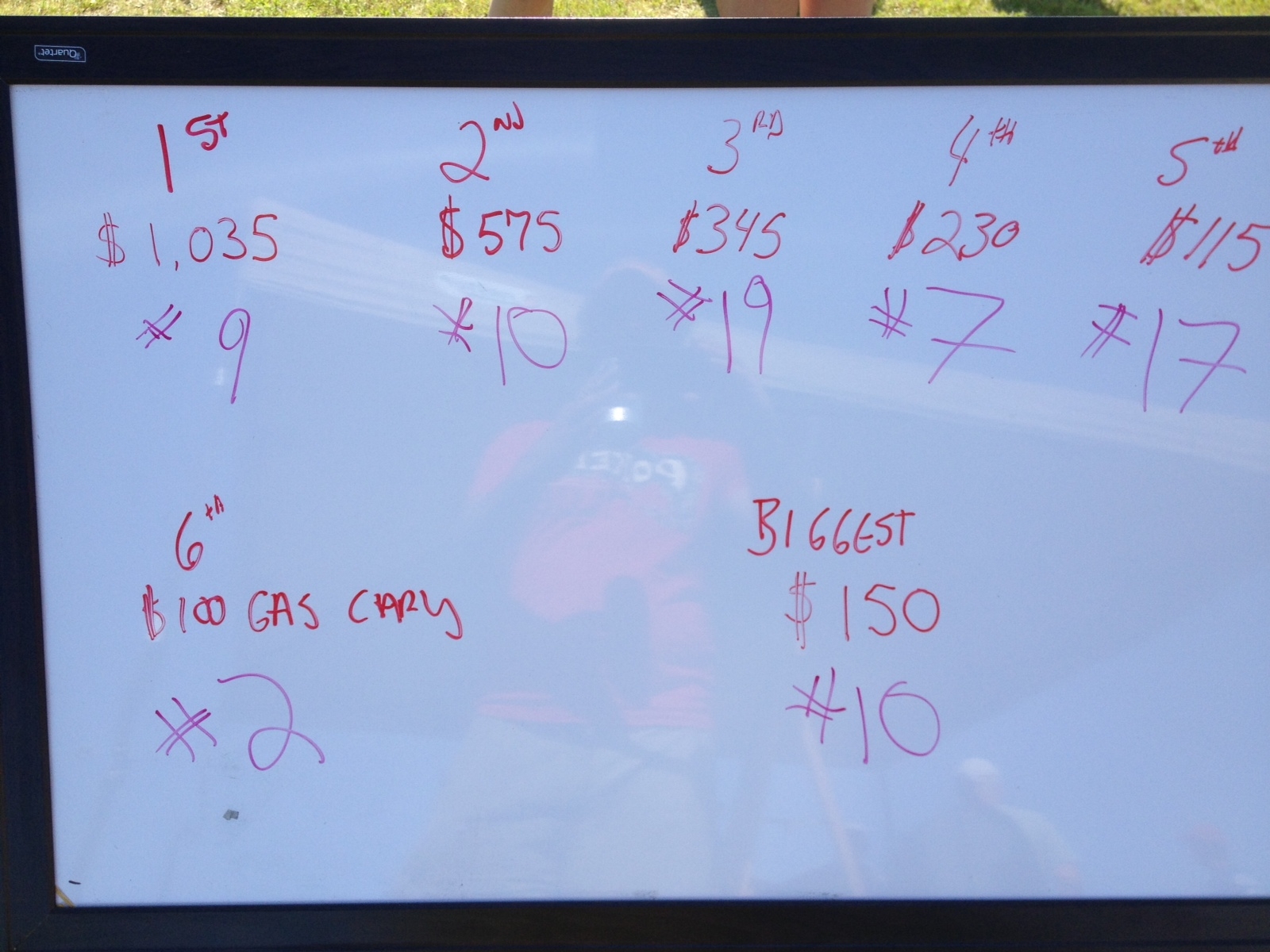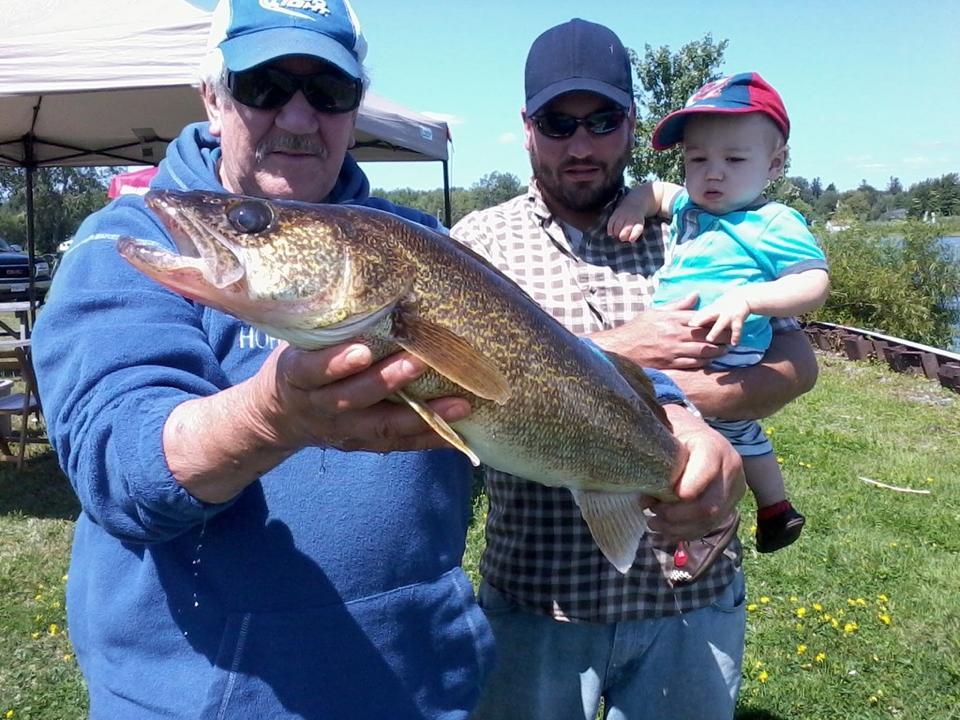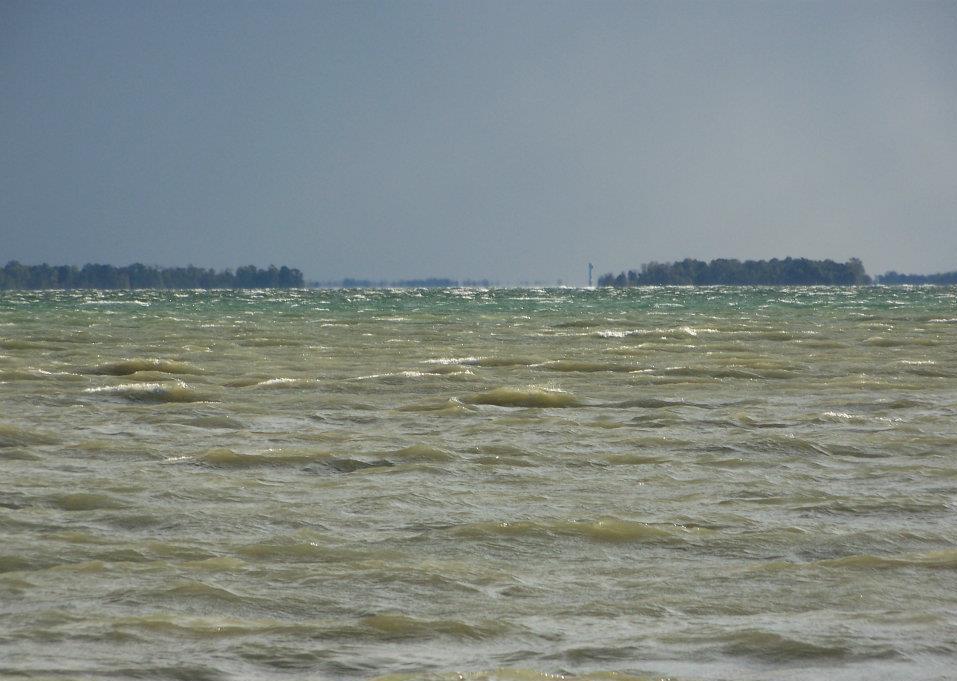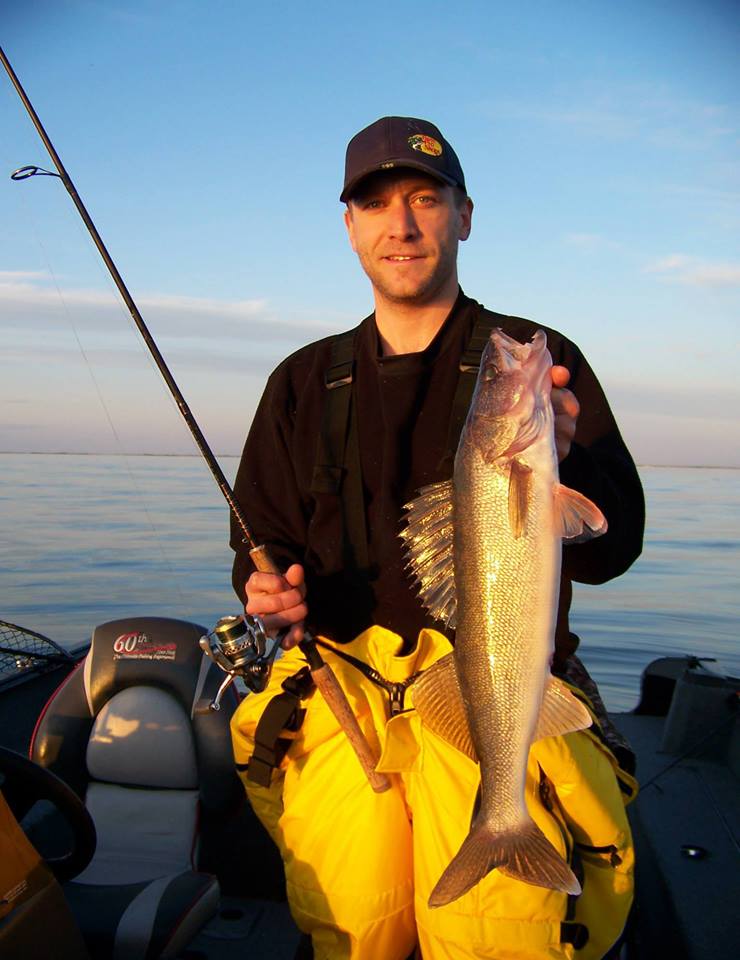When most people finish work on Fridays, I assume they make plans to gather with friends and share some good times together. If you’re anything like me, that means getting ready to escape the daily grind and hitting the water for a precious 48 hours. Ok let’s make that 30 or so because like most of us mortals I do need to sleep unfortunately. Two Fridays ago, I was heading home from work and preparing for another day on the water when I received a last minute Saturday morning surprise invite from local guide and 2013 South Lancaster Fish and Game Club tournament winner, Ryan Flaro. One of Ryan’s clients had cancelled for the morning and he had a few hours to spare. Despite already having tentative plans, I figured an invite from someone who has that amount of experience and the credentials to go with it was hard to pass up. So I graciously accepted.
After a quick chat and a coffee we hit the water by 8am. It didn’t take long before we were onto fish. And by onto fish, I don’t mean catching them, well at least not right away. Ryan and I both knew that fishing’s been tough this year, so we decided to have a bit of fun with his underwater camera. No sooner than a few minutes after we made it to our first spot, Ryan threw the camera down and revealed surprisingly clear images of the world below the surface. I have an Aqua-View as well, but must admit I rarely use it because of the low-resolution image and difficulty seeing the screen in the bright sun. I think it’s dated to the rotary phone era. Thankfully Ryan’s model isn’t as archaic. His has a colour monitor and incredibly clear resolution which definitely makes the experience much more enjoyable. It was great to explore, take our time and not feel pressured to catch fish for a few hours. I was amazed at how many walleyes hold on a given piece of structure, but more importantly, how they gravitate and stick to a specific part of that structure; the proverbial spot on the spot, if you will. Watching them swim nose up against the current is both fascinating and mesmerizing. I love watching walleyes in their natural element. They have incredible poise and grace underwater and are masters of their element. Based on our observations, Walleye seem to gravitate to open patches near weeds that offer some current and a hard bottom. If that area offers scattered stones or boulders even better. Years of fishing this lake teaches you this and one gets good at finding these spots by reading the water, but seeing it live with the help of a camera opens up a whole new realm and brings imagination to life. It’s really fun to just watch and learn sometimes and fun was what this outing was all about.
There comes a moment, however, when the urge to catch a fish takes over. Now that we’d taken a look it was time to drop a line to see if we could get them to react. We went over fish we had just seen, and no matter what we tried, there were no takers. We moved from spot to spot, covering miles on the water in the process and despite not catching any big fish that morning we managed to put a few in the boat with a bit of persistence and precision. By the time we headed back in at noon, we had enough for at least a good snack.
Overall we had a great morning, I’ve know Ryan since we were kids, we grew up as neighbours, but oddly enough, this was the first time we ever fished together so it was great to chat and share our fishing experience. It was interesting to see that we fished a lot of the same spots, but fished them quite differently. We also exchanged a few spots that were new to both of us. I especially appreciated the time Ryan took to show me where walleyes were holding on some of the structure and the expertise he took time to share. That beautiful Saturday morning getting to know Lake St. Francis reminded me why I spend so much time fishing in the first place. It’s not always about competition or filling up the livewell, sometimes it’s important to revive the childhood passion that originally drew us to the water and ultimately keeps us going back.
I often get asked how I know where fish are and where to find them. the answer is often that I honestly don’t know. So every outing is a search, more than it is a get, if you know what I mean. Walleyes are migratory critters. They move as the environment in which they live changes. Weeds are a big factor in driving that change. Much like land vegetation, aquatic weed growth starts in the spring as the water warms and immediately begins to attract baitfish and predators. As weeds grow over the summer months, they provide shade, slightly cooler temperatures and food. In the winter, when there are no weeds, walleyes will congregate on huge flats near spawning grounds, rocky points, sharp break walls, or rock piles in deeper water. Finding fish is however only half the battle. As anyone who’s ever spent time trying to catch them will tell you, walleyes are also extremely finicky at times. Our Percidaed friends can be notoriously frustrating in that aspect, resulting in the occasional ever-so-humbling goose egg. They seem to respond to triggers when it comes to feeding. This becomes quite apparent when ice-fishing near other anglers for example. Take a situation where there are multiple anglers with holes drilled a bit everywhere in the same area and you will notice patterns of when people are catching fish and when they are not. Sometimes an hour can go by without a fish caught, then seemingly out of nowhere people start catching fish regularly for the next hour. Wait twenty more minutes and the bite goes cold again. What turns them on and off is often a mystery, though experience tells me one sure way is to get distracted by a cell phone. Check your cell phone and you’re guaranteed to miss a bite, especially on those slow days :).
In all seriousness, I’ve personally seen fish in 15 feet of water or less hugging the bottom and if it weren’t for their gills moving you’d think they were dead. I recall one time when I could bump a jig off the fish’s back and nothing would get them to strike. I remember another where a school of over 20 large suspended walleyes sat in the middle of the channel in broad daylight, about 7-8 feet below the surface. My friend an I tried everything to catch them, but to no avail.
At other times, you can’t keep lures away from fish. I’ve had walleye chase a crankbait to the side of the boat like a musky, bass or pike would. I also remember an outing with my buddy Mike when we were drifing spinners with the current and the fish were hitting the spinners as we were reeling them up to the boat. They were spitting up tons of baitfish too. Just this past weekend I caught a 4 pounder reeling in a crankbait when I thought I was done fishing a spot. The fish hit my lure about 10 feet from the boat, in about 5 feet of water while I was over 30 feet. That fish was either suspended off the structure, or it followed the bait and chased it up the water column to the boat. Needless to say they were aggressive that day and ended up with over 15 fish caught. The very next morning a cold front moved in, the wind blew strong from the North, and I came home empty-handed (and freezing) fishing the same spots that produced so well only a few hours earlier. That’s just the way the cookie crumbles in the game of fishing for walleyes. Sometimes they are on, sometimes they are not. Sometimes it’s jubilation for the crazy guy on the water, sometimes it’s despair.
As I mentioned earlier, Ryan and I’s observations revealed that walleyes were holding just off the edges of weeds, on rocky/sandy flats that offered a slight to moderate current. Seems to me walleyes love edges. I always knew this from trial and error, but looking at fish in their element drove the point home for me. They will hold right where the weeds end and the sandy/rocky bottom begins. It’s their comfort zone. There are however, exceptions to every rule.
One one spot Ryan called “home”, I learned and witnessed proof that they also sometimes hold right on top of the weeds, seemingly in the middle of nowhere. Sure I’ve seen walleyes hide inside weed edges and have heard of bass guys finding surprisingly large walleyes in reed beds and lillypads, but I didn’t know they also sat directly on top of weed beds in open water. This was indeed the case in this location. The area consisted of a saddle in about 10-12 feet of water between two deeper holes. It’s off a point, and also provides plenty of current. The weeds, shallow water and unusual structure layout makes the spot very difficult to fish because there are no open spots to put a lure. And personally I would not have thought to even look at that spot, but they are definitely there.
As most good things usually do, our short outing ended too early. I spent that afternoon catching up with my buddy Eric. We took advantage of the hot late summer sun by snorkeling a few areas. Snorkeling in the current takes a bit of practice. You need to learn to pop your ears and dive to at least 15 feet to get to walleye holding areas, but as you can see, once you get the hang of it you can reap some really interesting rewards. You can also swallow a gallon of lake-water, but that’s all part of the charm. Either way, looking at the world below the surface whether it be with an underwater camera, snorkeling or even scuba-diving is a lot of fun, and can only help an angler figure out the big picture.
As we enjoyed some of the morning’s fresh walleye and a bonfire by the water, I thought I would try my luck for the evening bite. This would prove to be an excellent decision. If you know there are fish in an area, I recommend trying to get them to bite in the last few hours of daylight. I suspect you will have much better luck. I know I do.
Fish move tight to structure at sundown and do so to for only one reason, to put the feed-bag on. I think the lower light also helps better conceal lures and fools fish that otherwise would be wary of your presentation in broad daylight. I’ve made some amazing catches in July and August in the middle of a sunny day before, but this year I’ve had much better success finding fish in low light conditions. As far as quality goes, almost all of my big fish were caught with the sun almost or completely down as well. As most fishing things go, this is by no means guaranteed science, but I can say that after a full day on the water, some added experience and knowledge and hours on the water, a fish like this one makes it all worthwhile. Not to mention the other 10 fish we put in the boat that night.
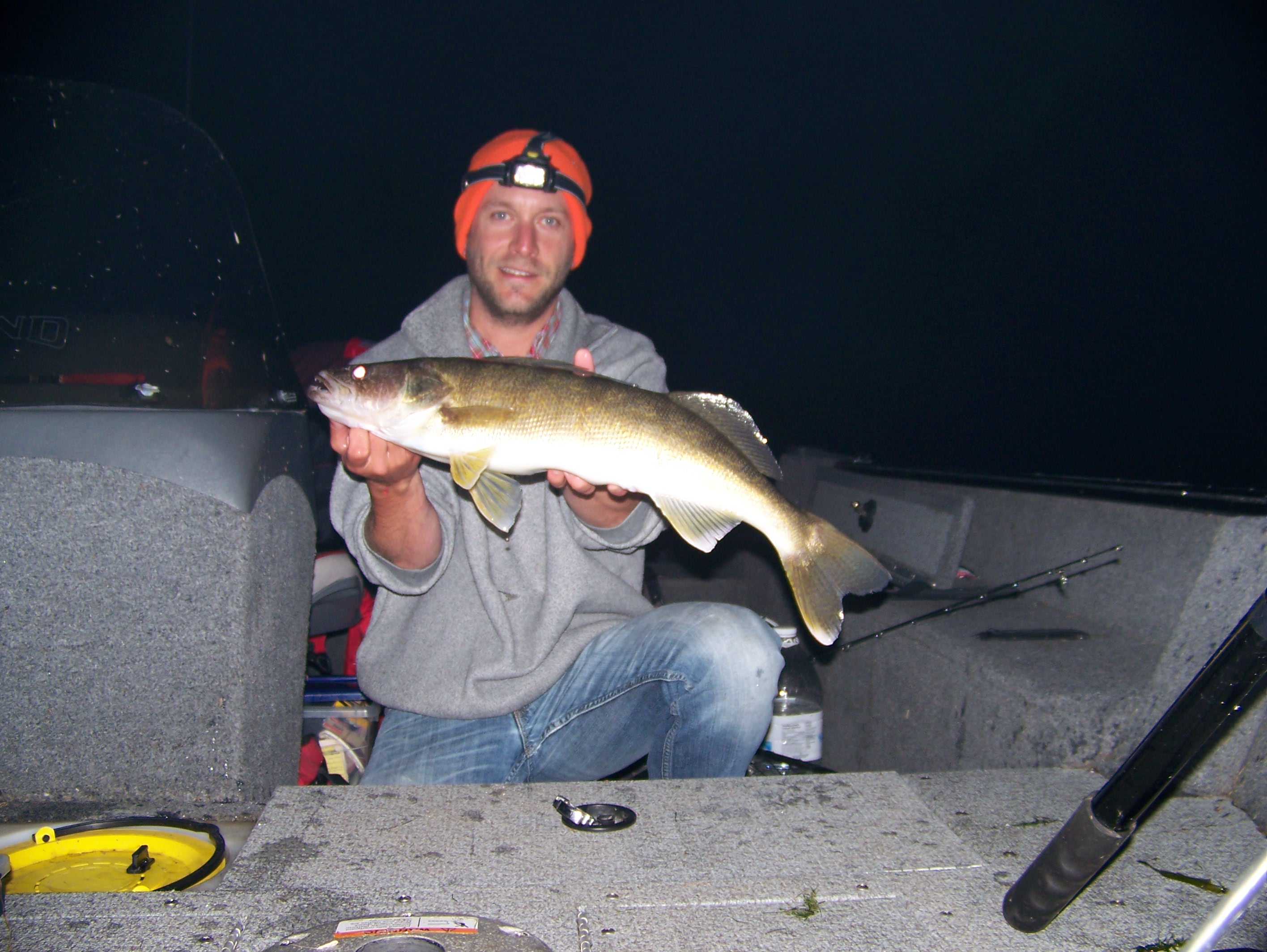
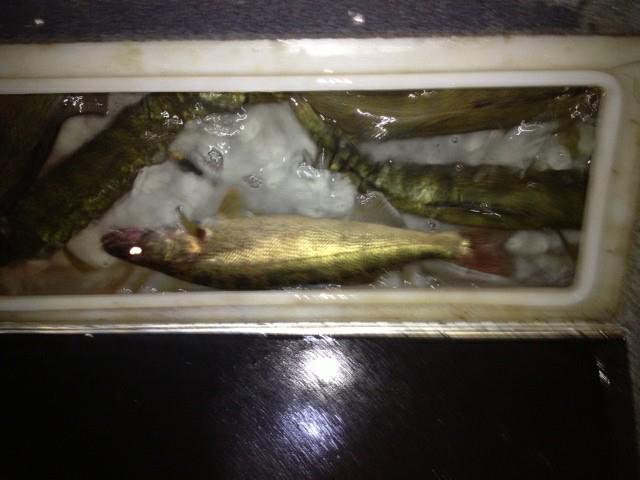
Until next time, Stay Outside!
Jigger.
